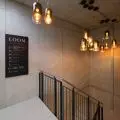If you're wondering how to restore and maintain a solid wood floor, you've come to the right place. Such floors are an investment, and proper maintenancecan make them last for decades. However, accidents do happen. If your floors are starting to look a little shabby, you may be wondering what to do now. To help you decide, we've put together a comprehensive guide to solid wood floor maintenance and care.
What kind of care does your wood floor need?
This is the first question you need to answer. Perhaps it will involverefinishing the surface or replacing entire pieces. Below we'll outline a few factors that will help you assess what solid wood needs to look like new.
Light scratches
Scratches can appear over time, regardless of the flooring material. If minor scratches are the problem, we recommend repairing by sanding the damaged surface. In this case, only the finish of the wooden floor will be removed, not the wood itself. Such a floor can then be easily repainted.
Sometimes wooden floors need a thorough renovation
© Laura Adai
Replacing wood floors
However, if your floors require extensive refinishing and replacement of components, know that this is a job that requires hiring professionals. If you attempt to refinish your own floors that are badly damaged, you will ultimately end up wasting more time and money than if you hire a professional.
How to restore solid wood floors?
Renovatingwood floors is certainly much cheaper than replacing them. Before we start any work, we need to make sure that the surface has been cleaned very well. Let's move all the furniture to another room, vacuum every corner, and finally go over the wood with a slightly damp mop. Once we've done this, you'll have a great view of the entire floor and we'll assess exactly where floor refinishing is especially needed.
Removing the top layer
Sanding
How do you refinish a parquet floor so that it impresses with a uniform, glossy surface and is ready for heavy use? The basic activity when refinishing a wood floor will be sanding. This is the process of sanding wooden surfaces to get rid of the top layer from the planks using a machine called a scraper. It is equipped with discs or belts of sandpaper. In addition, other sanding equipment is also used to renew wooden surfaces comprehensively. Most often, about 1-2 mm of material is removed, at which point the top layer of wood is stripped off, along with the varnish covering it. Underneath, a fresh layer of wood is then visible, free of imperfections - dirt, discoloration or dents. A wood floor prepared and smoothed in this way is ready for further restoration work - varnishing, oiling, or even changing the color with staining agents. In this way, a deteriorated floor can regain its luster and serve for many years to come. It is also a much lower cost than replacing the entire floor with a new one.
Sanding
If we don't have a sanding machine at our disposal and don't want to call in professionals, we can take care of the sanding ourselves. Here, too, we need to remove all dirt and old layers of varnish. For this you will need sandpaper or an electric sander. The sander should be moved according to the direction of the grain. Then the procedure should be repeated, using finer sandpaper. However, this is an extremely labor-intensive task that may not produce as good an effect as using a special machine.
Finishing the floor with varnish provides good protection against damage
© Jarek Ceborski
Finishing
Varnishing
One option for protecting a previously prepared floor, is varnishing - it allows you to create an additional layer on the floor, which will protect the boards from scratching and moisture penetration. Properly selected will also allow you to expose the color of the wood and emphasize its grain. Unlike oil, varnish remains on the surface of the floor. There are different types of preparations available on the market. The appearance of the floor will be affected by the type of finish - gloss or matte. The choice of the right varnish should also depend on how intensively our floor is used. First, however, we should use a primer varnish, which will fill the pores of the wood and prepare the floor for further treatments. Then we apply two or three coats of varnish proper.
Oiling
If you want to get rid of discoloration caused by UV rays, and to protect the floor from mechanical damage, oiling will be a good solution. Oil penetrates into the structure of the wood and protects it from fungi and other adverse factors. Such treatment also allows you to protect the floor well - it becomes resistant to moisture. In addition, it retains a beautiful natural appearance by emphasizing the grain and color of the wood.
Unfortunately, the oil oxidizes with time, and also wipes off (usually where the wood is heavily exposed and used). As a result, the whole process needs to be repeated much more often than in the case of varnish, whose protective layer stays on the boards longer. This treatment needs to be performed even once every six months - it all depends on the degree of use. Also remember that oiled wood flooring requires appropriate care products.


























